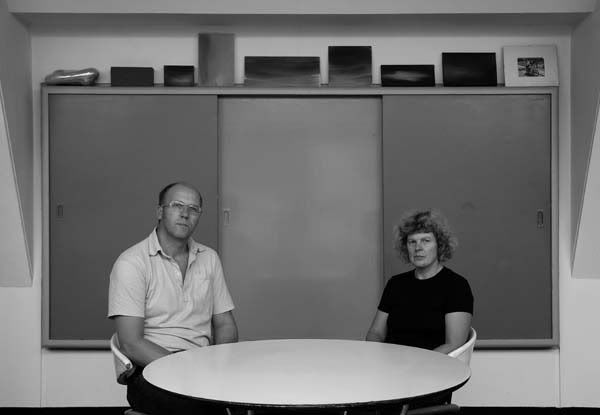
I went to the Bik Van Der Pol lecture at SfAi. They have been working collaboratively since '95 and their work spans installation, public temporary architecture, live art, and sculpture. Architecture is a constant thread and influence in their work.
What struck me most about the lecture was the fluidity between one another in terms of talking about their work. I have not done much highly collaborative work outside of class assignments and I admire the chemistry between them, just from hearing them speak and seeing images of their work it was obvious that they make a good team. Perhaps what interested me most about the lecture was the fact that they make decisions together and work as a team and not individuals and their collaboration goes beyond sporadic projects.
It was interesting to go to a lecture that wasn't given by a painter or photographer. I think that Dena mentioned the bookshop project in her blog. That project was really cool to me also. They built a complete copy of a bookshop that they fell in love with in London. The exact measurements and books were available for sale to the public. How time consuming! But it seemed so worth it, the final product was amazing.
My favorite work that they presented was 'sleep with me' an andy warhol film that they played in a gallery, with beds set up for viewers to lay down in and watch the film and eventually fall asleep. They did this a few times in different places. It was also shown in Tokyo in a museum and they talked about how it was interesting to see it open during normal business hours as opposed to the sleep over that they had inside a museum somewhere in Europe. The piece became a central spot in the museum exhibits since people kept walking around and going back to it, to sleep, to sit and chat and watch the film.
This got me thinking about the comfort of a place or object somewhere that is set up to bring people to it. It reminded me of my old apartment on the corner of Haight and Fillmore in san francisco and someone had dumped an old couch on the corner. It was there for a couple of days and since I sat in my window to smoke and watch the street I was able to see all the different people that would come and sit on it, even though it was a really trashy neighborhood. Before it was taken away, I got locked outside by an angry exgirlfriend and I remember sitting on that couch for quite sometime. I was so glad it was there. A comfy couch in the middle of chaos.
Anyways. Those are some of the things that appealed to me about the lecture!
.jpg)

















